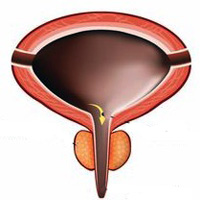In women with incontinence, the need for pressure-flow study before surgery and abnormalities in the voiding phase. An up-to-date comment on the available problem accompanied by literature

Submitted: February 28, 2021
Accepted: June 14, 2021
Published: December 21, 2021
Accepted: June 14, 2021
Abstract Views: 534
PDF: 297
Publisher's note
All claims expressed in this article are solely those of the authors and do not necessarily represent those of their affiliated organizations, or those of the publisher, the editors and the reviewers. Any product that may be evaluated in this article or claim that may be made by its manufacturer is not guaranteed or endorsed by the publisher.
All claims expressed in this article are solely those of the authors and do not necessarily represent those of their affiliated organizations, or those of the publisher, the editors and the reviewers. Any product that may be evaluated in this article or claim that may be made by its manufacturer is not guaranteed or endorsed by the publisher.
Similar Articles
- Haytham Elsakka, Ahmed Ibrahim, Abdulghani Khogeer, Adel Elatreisy, Rawan Elabbady, Osama Shalkamy, Ayesha Khan, Iman Sadri, Ahmad AlShammari, Ahmad Khalifa, Serge Carrier, Melanie Aube-Peterkin, Evaluation of urodynamic pattern in short and long-standing diabetic patients , Archivio Italiano di Urologia e Andrologia: Vol. 95 No. 1 (2023)
You may also start an advanced similarity search for this article.

 https://doi.org/10.4081/aiua.2021.4.441
https://doi.org/10.4081/aiua.2021.4.441



